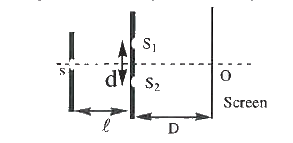Indentify the true statement(s)
A catalyst is chemically unchanged at the end of a reaction
A catalyst may appear in the kinetic rate equation of the reaction
A catalyst will not affect the composition of an equilibrium mixture
A catalyst cannot cause a non-spontaneous (ΔG>0) reaction to proceed
The correct Answer is:A, B, C, D
To identify the true statements regarding catalysts, we will analyze each statement based on the information provided in the transcript.
1. Statement 1: A catalyst is chemically unchanged at the end of a reaction.
- A catalyst participates in the reaction and may be consumed during the reaction, but it is regenerated at the end. Therefore, it is chemically unchanged at the end of the reaction.
- Conclusion: This statement is true.
2. Statement 2: A catalyst may appear in the kinetic rate equation of the reaction.
- A catalyst can take part in the rate-determining step, which is the slowest step of the reaction. Since it can influence the rate of reaction, it may appear in the kinetic rate equation.
- Conclusion: This statement is true.
3. Statement 3: A catalyst will not affect the composition of an equilibrium mixture.
- A catalyst increases the rate at which equilibrium is reached but does not change the composition of the equilibrium mixture itself. It only speeds up the process of reaching equilibrium.
- Conclusion: This statement is true.
4. Statement 4: A catalyst cannot cause a spontaneous, non-spontaneous reaction to proceed.
- A catalyst can only affect the rate of both forward and reverse reactions. It cannot make a non-spontaneous reaction spontaneous; it only facilitates the reaction process.
- Conclusion: This statement is true.
Final Conclusion:
All the statements regarding catalysts are true.
- A catalyst participates in the reaction and may be consumed during the reaction, but it is regenerated at the end. Therefore, it is chemically unchanged at the end of the reaction.
- Conclusion: This statement is true.
- A catalyst can take part in the rate-determining step, which is the slowest step of the reaction. Since it can influence the rate of reaction, it may appear in the kinetic rate equation.
- Conclusion: This statement is true.
- A catalyst increases the rate at which equilibrium is reached but does not change the composition of the equilibrium mixture itself. It only speeds up the process of reaching equilibrium.
- Conclusion: This statement is true.
- A catalyst can only affect the rate of both forward and reverse reactions. It cannot make a non-spontaneous reaction spontaneous; it only facilitates the reaction process.
- Conclusion: This statement is true.
All the statements regarding catalysts are true.
Similar Questions
Knowledge Check

Indentify the product.A B
B C
C D
D
The figure shows a schematic diagram showing the arrangement of Young.s Double Slit Experiment

If the distance d is varied ,then indentify the correct statement
View SolutionTrue statement is
View SolutionIndentify the wrong statement in context of heartwood
View SolutionIndentify the wrong statement in context of heartwood
View SolutionIdentify the statement(s) which is/are true.
View SolutionIdentify the statement(s) which is/are true.
View Solution
True statement is:
View Solution